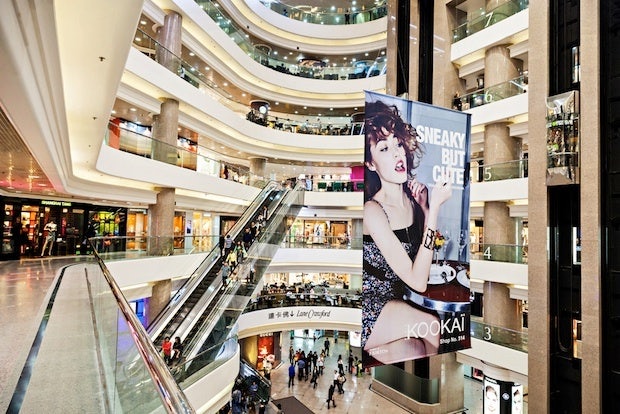
Hong Kong's Times Square mall on March 19, 2013. (Shutterstock)
Despite worries about a slowdown in China’s luxury retail market, the country is now Asia’s largest retail economy and will likely see total retail sales of US$1.7 billion by the end of 2013, according to a new report by real estate services firm Cushman & Wakefield.
"The retail growth story in Asia, especially in emerging markets like China, is real and likely to continue over the longer term,” said Randall Hall, executive managing director of Greater China at Cushman & Wakefield.
According to the report, luxury in particular should still expect growth, albeit at lower rates. “The recent crackdown on gift-giving to government officials has had a significant impact on some luxury brands, notably those focused on watches and accessories,” it says, but “China's love affair with luxury is expected to last for some time.”
One main driver of Asian luxury retail growth is Hong Kong, which retains its position as the world’s most expensive location for retail rental for the second year in a row, according to the report. It also found that average rents “reached new records in prime shopping districts,” with Causeway Bay seeing an average cost of $US3,017 per square foot per year. These prices have risen by 20 percent from 2012 and have more than doubled since 2009.
According to the report, retail sales for the Asia-Pacific region have grown by 21 percent over the past five years, driven mainly by Hong Kong and mainland China. Private consumption as a share of GDP is also rising in the region, the report found. As many other researchers have noted, lower-tier cities have been the main drivers of retail growth:
Retail growth in China has remained vigorous while signs of moderation have surfaced as the economy undergoes a restructuring process. Tier 1 cities Beijing, Shanghai, Shenzhen and Guangzhou have the wealthiest and brand-conscious consumers and now show retail sales growth of 9% to 16%, while in major tier 2 cities, such as Chengdu, Wuhan, Nanjing, Shenyang and Chongqing, retail sales growth is higher ranging from 13% to 17%. Overall, we expect a steady rise in income levels to nurture an aspiring middle class population and, barring any economic surprises, this should underpin balanced retail growth for the next decade.
Tourist spending is also an essential component to increasing sales, and has been stimulated by growth in air travel. The report states that as much as 30 percent of total retail sales in Asia are made by tourists, a rate driven up by mainland shoppers in Hong Kong, which make up three out of every four tourists in the city.
However, the report cautions that retailers should be wary of where they expand. It states that many Chinese cities have the potential for retail oversupply in suburban areas and places subject to inexperienced developers. As a result, “high vacancy and project failure” are risks in these locations, so retailers should choose wisely where they open their next brick-and-mortar locations. One way for brands to mitigate this risk is to shell out the major prices for prime retail locations such as “Shin Kong Place in Beijing, Grandview Plaza Guangzhou and MixC Shenzhen,” which are considered to be generally immune from oversupply issues.